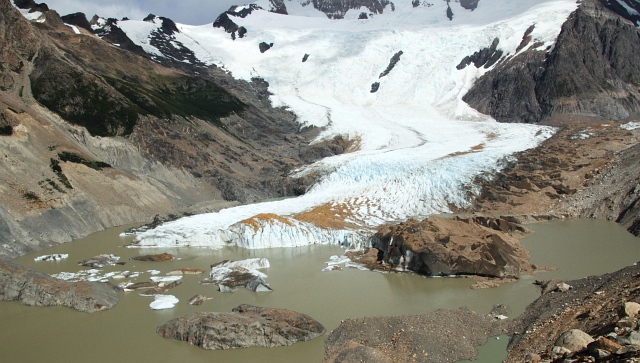

The Glaciar Grande (Large glacier) ends up in the Laguna Torre at the base of the Cerro Torre. The glacier tongue calving into the lake is best viewed from the Mirador Maestri, which can be reached in a 3-hour hike from El Chaltén. To arrive there, one first has to follow the trail to the Laguna Torre and, when having arrived at the lake outlet, to climb the moraine ridge on the right side of the lake all the way to the viewpoint. But be careful: the wind can be very, very strong, so that standing in an upright position might be a challenge!

The glacier and its surroundings: a dynamic system


This image shows the lake with the calving tongue of Glaciar Grande, seen from the Mirador Maestri.
Click on the arrows or into the photo to learn how the glacier tongue and its surroundings have developed in the period 2006-2018.












